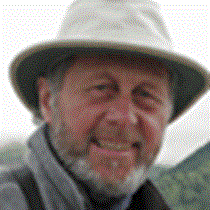Magdalena Bay, Baja California Sur
We have come here to explore, to enjoy, to learn about the interconnectedness of a desert ecosystem, and to experience life-altering encounters with a magnificent array of whales and dolphins. Other creatures have come here to survive; to escape the frozen, snow-covered fields and forests of the north…habitats in which they were born and nurtured for the first few months of life, but which the winter winds have now turned against them. Many creatures here are migrants.
Among the avian visitors to this spectacular coast are numerous species of shorebirds. Dominant among them is the Long-billed Curlew shown here. These tall, elegant birds of the Great Plains and Prairie Provinces of central North America arrive here by the thousands. They work their way south each autumn to find warmth and abundant food. The soft, rich muds of Magdalena Bay and Hull Canal are amazingly productive of invertebrate life – amphipods, marine worms, snails and various larval forms. Marbled Godwits, Whimbrels, dowitchers, yellowlegs, plovers and sandpipers share the abundance with the curlews. Each has its own feeding mechanism: long legs or short legs; long bill or short bill, straight or curved; deep probing or shallow probing. The various combinations of physical attributes allow each species to gather its food with relatively little competition from the others.
The gray whales that we have marveled at for the past three days are here to breed and to give birth, while the birds are here to build muscles and fat reserves sufficient to take them back to their spring nesting grounds. As we cruised and kayaked among the myriad mangrove channels this afternoon, we encountered stately egrets, herons and ibises, flocks of shorebirds, and secretive rails and warblers. A natural desire developed: to share with others our newly found excitement and knowledge of the diverse and beautiful things that occupy this fragile planet. True conservation begins this way.
We have come here to explore, to enjoy, to learn about the interconnectedness of a desert ecosystem, and to experience life-altering encounters with a magnificent array of whales and dolphins. Other creatures have come here to survive; to escape the frozen, snow-covered fields and forests of the north…habitats in which they were born and nurtured for the first few months of life, but which the winter winds have now turned against them. Many creatures here are migrants.
Among the avian visitors to this spectacular coast are numerous species of shorebirds. Dominant among them is the Long-billed Curlew shown here. These tall, elegant birds of the Great Plains and Prairie Provinces of central North America arrive here by the thousands. They work their way south each autumn to find warmth and abundant food. The soft, rich muds of Magdalena Bay and Hull Canal are amazingly productive of invertebrate life – amphipods, marine worms, snails and various larval forms. Marbled Godwits, Whimbrels, dowitchers, yellowlegs, plovers and sandpipers share the abundance with the curlews. Each has its own feeding mechanism: long legs or short legs; long bill or short bill, straight or curved; deep probing or shallow probing. The various combinations of physical attributes allow each species to gather its food with relatively little competition from the others.
The gray whales that we have marveled at for the past three days are here to breed and to give birth, while the birds are here to build muscles and fat reserves sufficient to take them back to their spring nesting grounds. As we cruised and kayaked among the myriad mangrove channels this afternoon, we encountered stately egrets, herons and ibises, flocks of shorebirds, and secretive rails and warblers. A natural desire developed: to share with others our newly found excitement and knowledge of the diverse and beautiful things that occupy this fragile planet. True conservation begins this way.




